As a traveler, feeling in awe is common. You can even go numb to it if you aren't careful. But every so often, between the jaw-dropping vistas and unique architecture, you stumble upon something that feels different.
It doesn't just stir feelings of appreciation or spark your interest. It pulls on something deeper within you. That surprising tug happened during our visit to the Very Large Array in New Mexico – a strange but wonderful destination in the middle-of-nowhere.
As a whole, New Mexico feels quite desolate. The lack of large buildings and big cities makes a road trip through this beautiful state feel like you've stepped back in time. Which is why we were curious about the VLA – a very Sci-Fi-esque destination an hour west of Socorro, NM.
After hearing over and over again that it is a must-see, we decided to visit this strange grouping of radio telescopes. Not quite knowing what to expect, we were entirely ready for a giant let-down. We had taken a similar detour to visit Roswell a few weeks prior and were left feeling pretty disappointed.
We were thinking more alien-themed everything than a few shops to buy alien gifts and a quirky UFO Museum. So our hopes for this out-of-the-way tourist destination were very low.
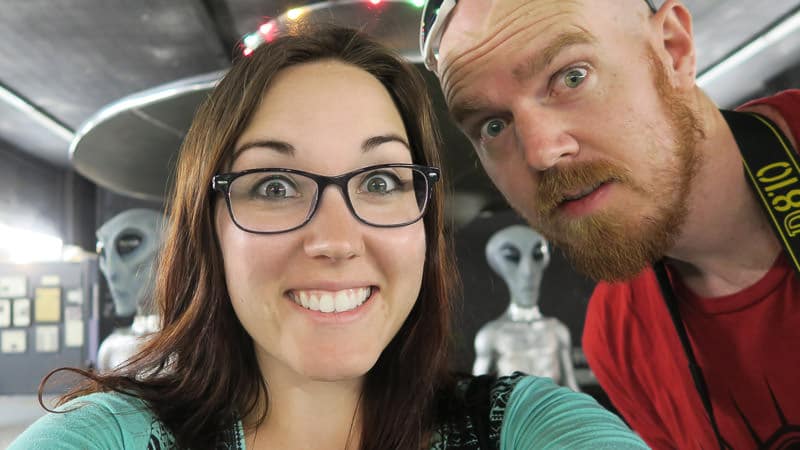
Destination: Middle-of-Nowhere New Mexico
It is a one-hour drive from Socorro, NM to the National Radio Astronomy Observatory's Karl G. Jansky Very Large Array. (Named after the man that discovered that objects in space also omit radio waves). It is a long, straight and mostly flat road.
At times it seems like you are driving into eternity. Other times, the heat coming off the asphalt makes the road blur at the horizon and it creates an illusion that you are just one more small hill from being in the mountains.
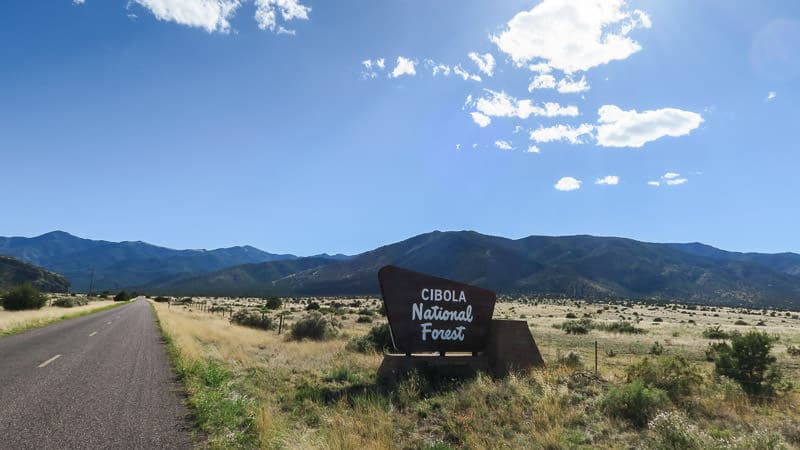
For most of the seemingly-long drive, you are next to the Cibola National Forest. This is a surprisingly lush place to take a break if your eyes get tired of staring forward for so long. With big trees and beautiful mountains, we found it a welcome reprieve from the plains that are more common in the area.
However, those large expanses are what made the NRAO pick this remote desert area of New Mexico as the home for the VLA. Located on the Plains of San Augustin, far from any large city, scientists are able to look deep into space with little disruption.
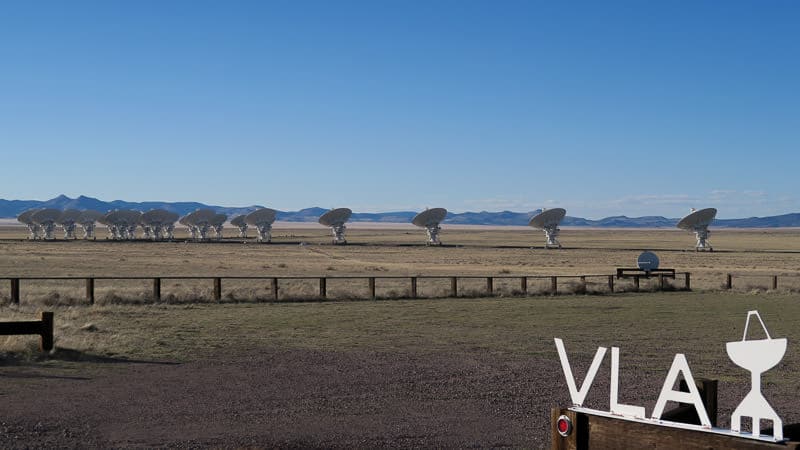
We spotted the Very Large Array in New Mexico from miles away because it creates such a stark contrast to the otherwise flat landscape. And the closer we got to the 27 giant antennas, the more our apprehension turned to amazement. This was not some tourist attraction or movie set. This was a feat of science. We were just lucky enough to be allowed a glimpse of it.
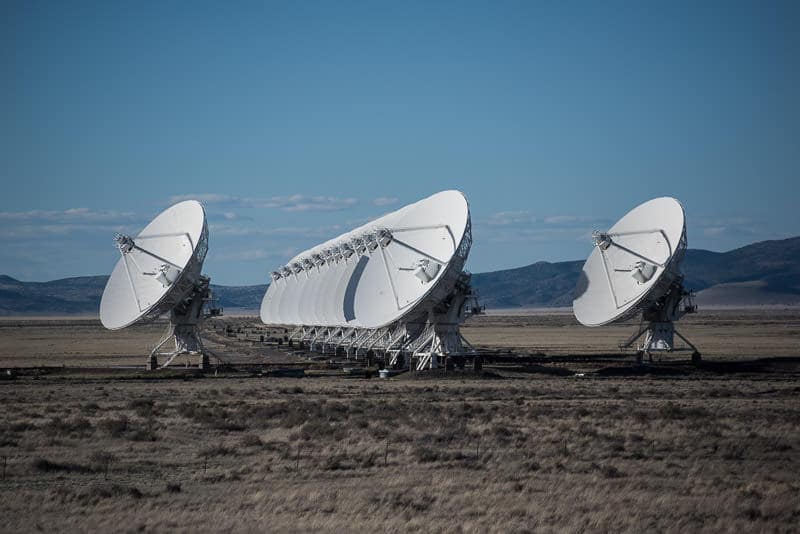
Exploring the Very Large Array in New Mexico
When we arrived to the Very Large Array in New Mexico late on a Tuesday afternoon, the gift shop had already closed and no one was around. But since the self-guided trail was open until dusk, we set off to explore.
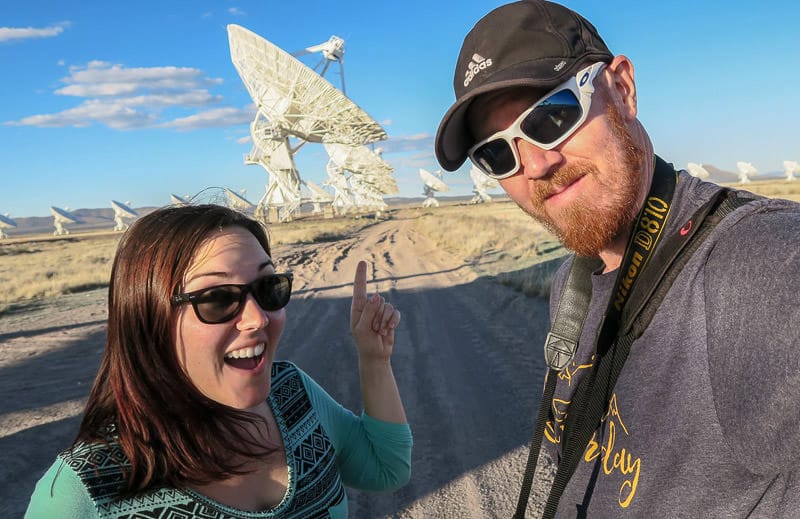
As we walked below one of the towering metal structures, we were surprised by how truly enormous it was. Then we heard the gears within it begin to work and watched as it and all of its 26 counter-parts moved in unison. What were they seeing up there?
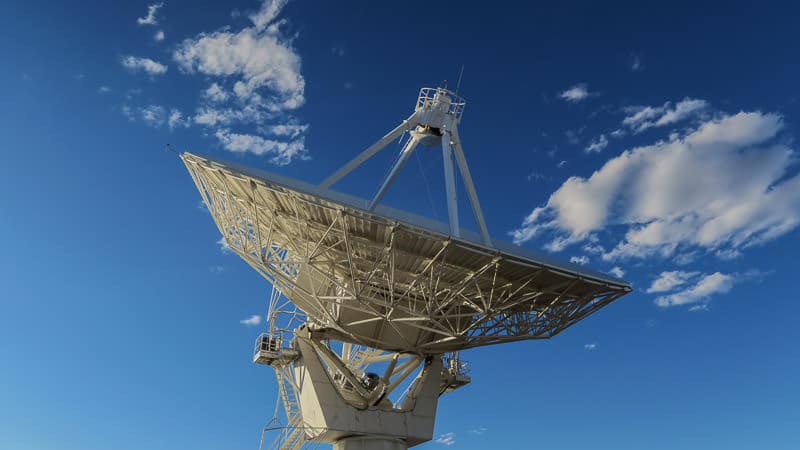
The short answer? A lot. Deemed the world's “most productive radio telescope.” Each individual 82-ft-wide, 94-ft-tall piece actually works together as if it were one enormous telescope spanning multiple miles.
This allows scientists to see and map otherwise invisible places in the universe. The antennas can also be moved along the large rail system in order to zoom in for more detail. Each of the legs of the iconic Y-shape can be stretched up to 23 miles long!
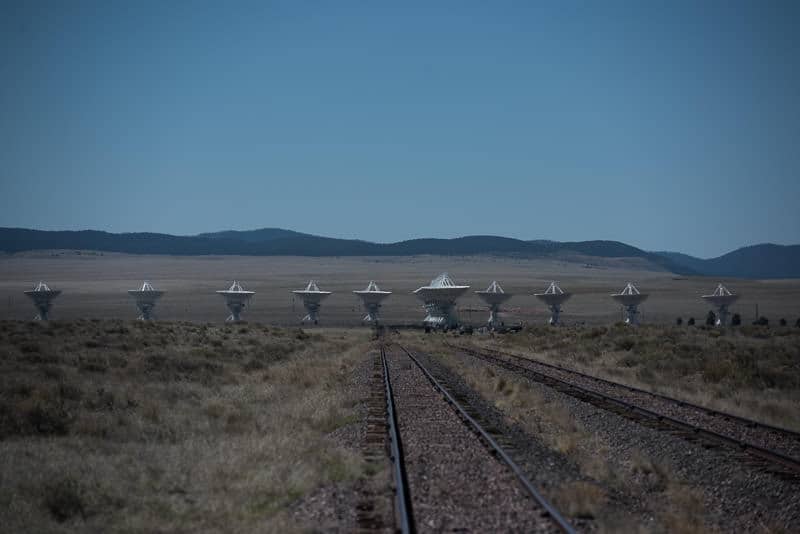
For the first time in a long time, I felt very, very small. It wasn't just the size of the antenna or the amount of space the array covers. It was what they represented – the unshakable, constant reminder that we are such a small speck of the universe. We stared at the sky imagining what was above us. What stars were being born and destroyed? How many galaxies and black holes are yet to be discovered?
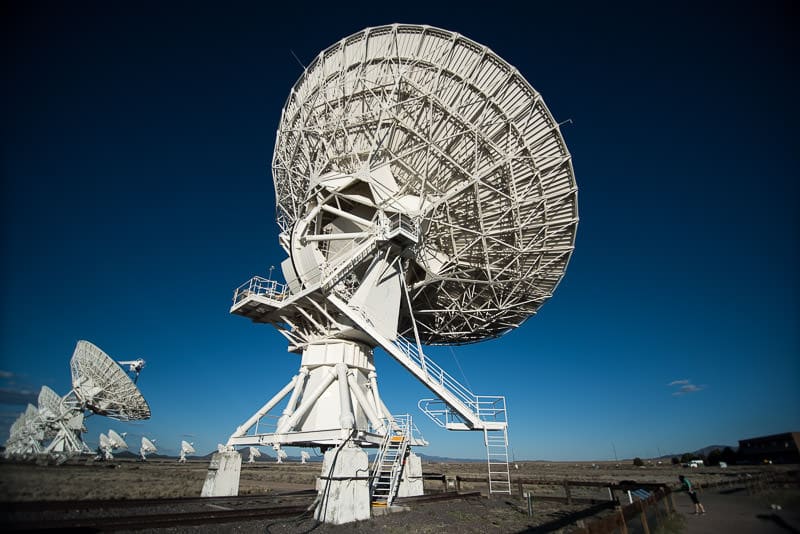
It was impossible to ignore the overwhelming feeling of curiosity inside me. Yet, at the same time, I was excited by the fact that even with all of this intense research, there is so much that will never be known. I find comfort in that realization. Sometimes it is more rewarding to embrace the uncertainty than to understand it fully and ruin the magic.
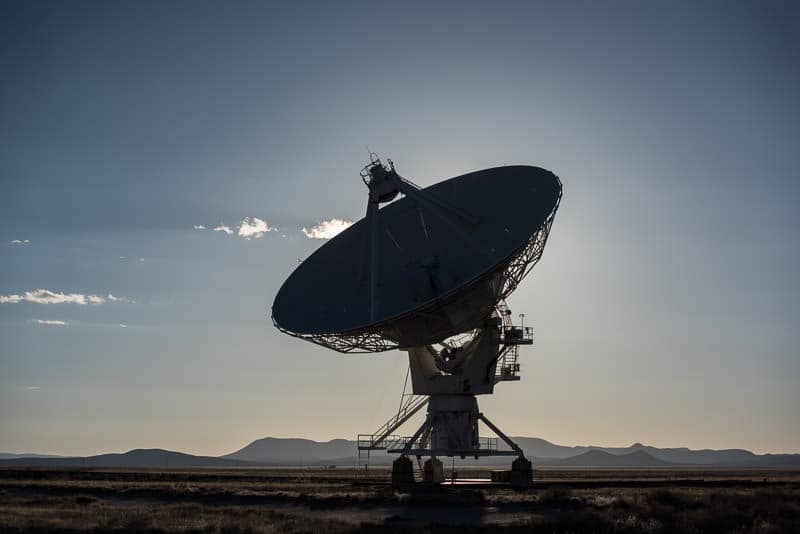
First Memories of Space
I remember vividly the first time the sky made me feel so very small, curious, and happily ignorant. My friend was spending the night and we snuck out a few hours before sunrise to see the meteor shower we heard about at school.
When our alarms went off at some horrific hour, I'm sure our preteen bodies regretted the decision. But, we wrapped up in blankets and dragged ourselves outside to watch for shooting stars anyway.
After about 20 minutes of staring straight up, our excitement was waning. We were getting impatient and thoughts of our cozy beds began to pull us back inside. But then we saw something flash across the sky. And then another. Soon the entire sky was filled with golden streaks. My heart was racing and my mouth was hanging open as I tried to count them.
I've likely romanticized this memory throughout the years. But I can say with certainty that I got to at least 100 before the show stopped. That night I realized just how small I really am. And that God created a universe more vast and amazing than I could ever imagine.
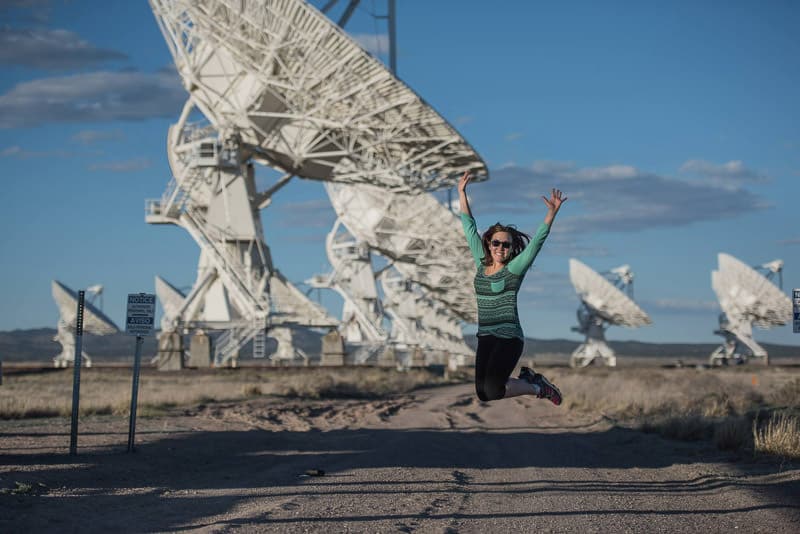
Moving on With Unanswered Questions
After the sun set on the strangely beautiful Very Large Array, we left this interesting place excited that we made the trip. Some man-made objects that we come across do so much to take away from the beautiful vistas around them. (Such as the oil rigs that litter West Texas).
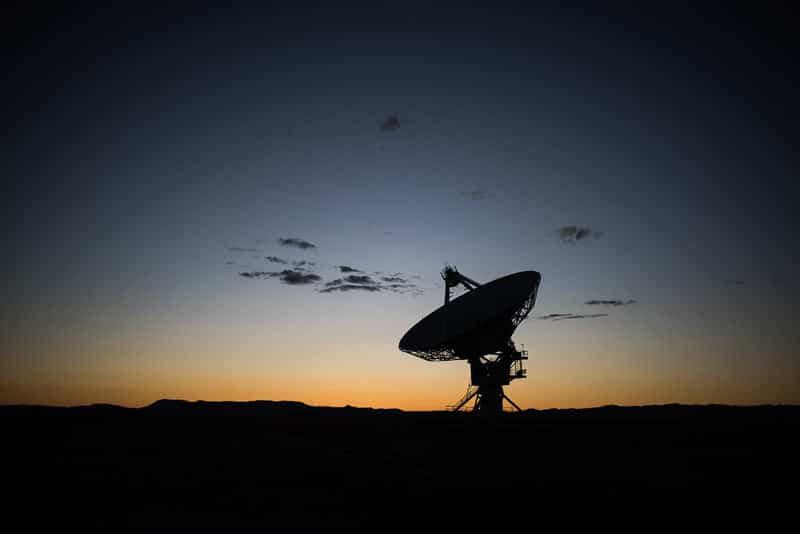
But these added something special to the views. They were a visual representation of some of the best characteristics of the human race – our curiosity, intelligence and determination. And for some, our openness to the idea that anything is possible.
We drove on to our campsite for the night feeling inspired and silly. Our brains were shooting off ideas we had never thought of and asking questions we couldn't answer in a million years. Yet, how fun it was to wonder. That night as we fell asleep, we thought of the many galaxies above us and what it would be like to float around up there. Who knows? Perhaps one day we will.
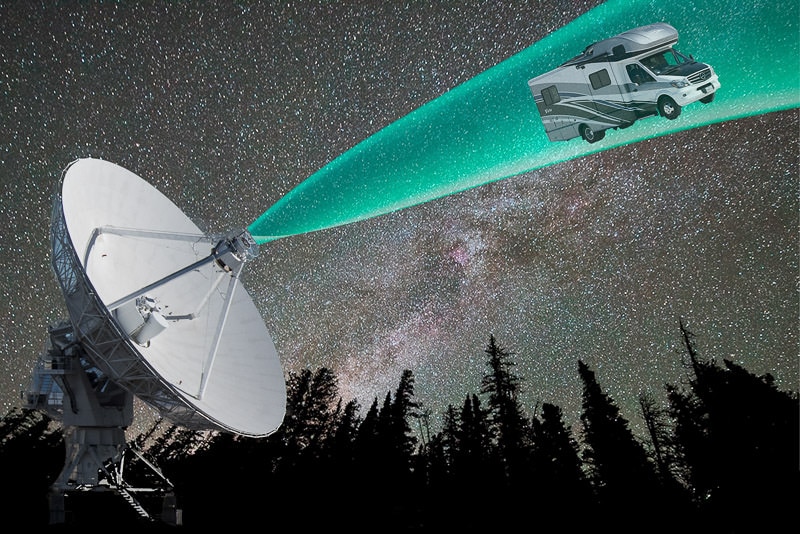
Helpful Details for Visiting the VLA
Location: 50 miles west of Socorro, NM.
Visiting Hours: The trail is open 8:30a.m. to sunset (gift shop closes at 4p.m.) Call ahead to make sure weather or other issues won't prevent you from visiting: 575-835-7410
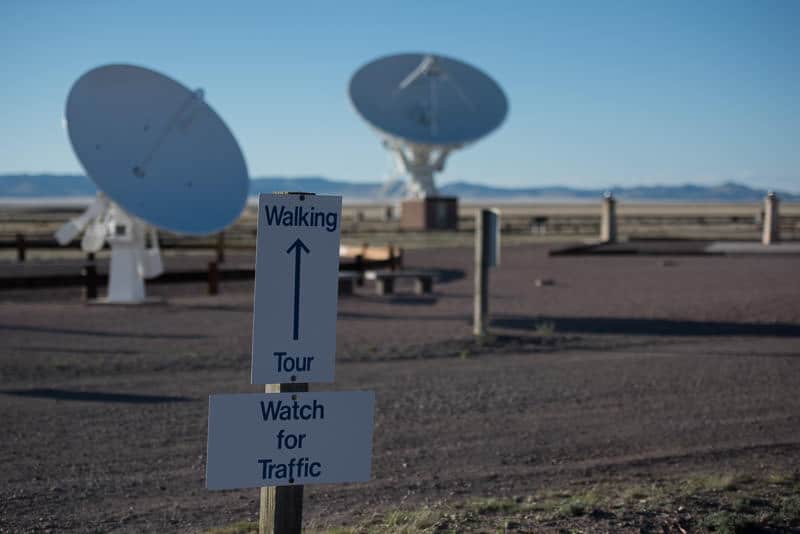
Admission Price: $6 per adult, $5 for seniors and children (under 17) get in for free.
Guided Tours: Offered on the first Saturday of each month at 11a.m., 1p.m. & 3p.m.
Rules: Your phones must be turned off or on airplane mode, so they don't interfere with the research. You must also stay on the designated trails. But, photos are welcome!
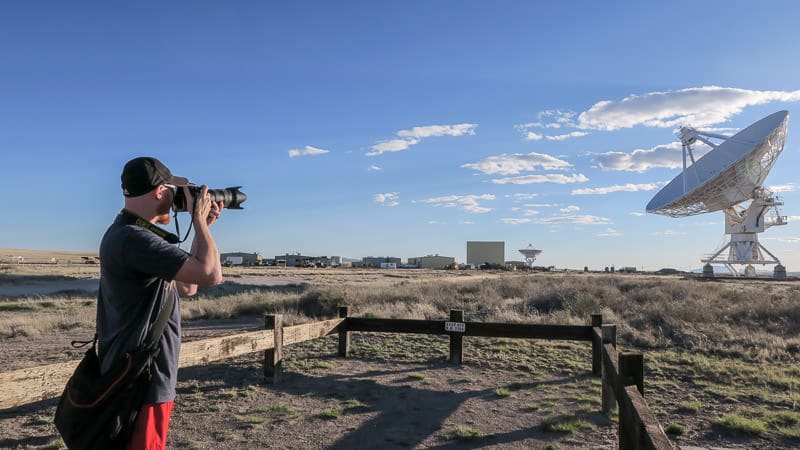
Biggest Discoveries: The Very Large Array in New Mexico has observed thousands of cosmic objects since 1976. Some highlights include: ice on Mercury, a supermassive black hole (150 QUADRILLION miles / 26,000 light years away), and the center of our Milky Way Galaxy.
Nearby Lodging: The VLA is probably more of a day trip, because there aren't a lot of options way out there for accommodations! However, if you are a fellow RVer or camper, we did enjoy our stay at the Datil Well Campground a little bit further west of the VLA. It is $5 per night with no hookups. There is also free camping at Water Canyon Campground in the Cibola National Forest. But the road there looked a little too rough for our rig.
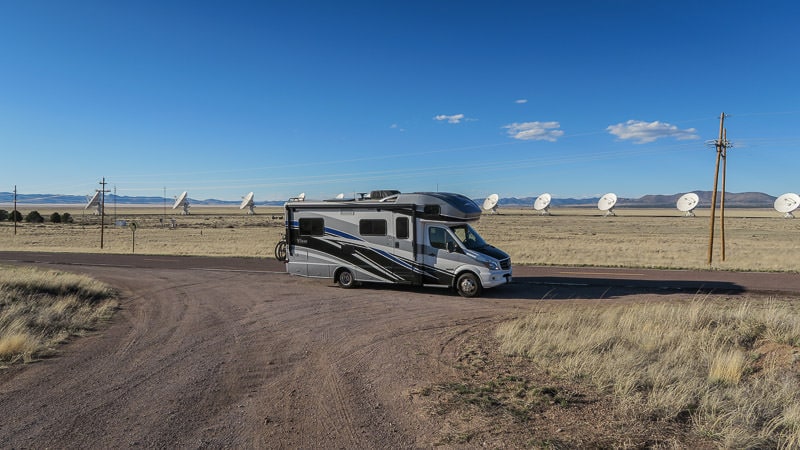
P.S.- Not planning to visit middle-of-nowhere New Mexico anytime soon? No worries, they have a great virtual tour on the NRAO site.
For more stories and tips, check out our other New Mexico blog posts. And for a list of where we stayed overnight during our trip, take a look at our RV Camping Reviews page.

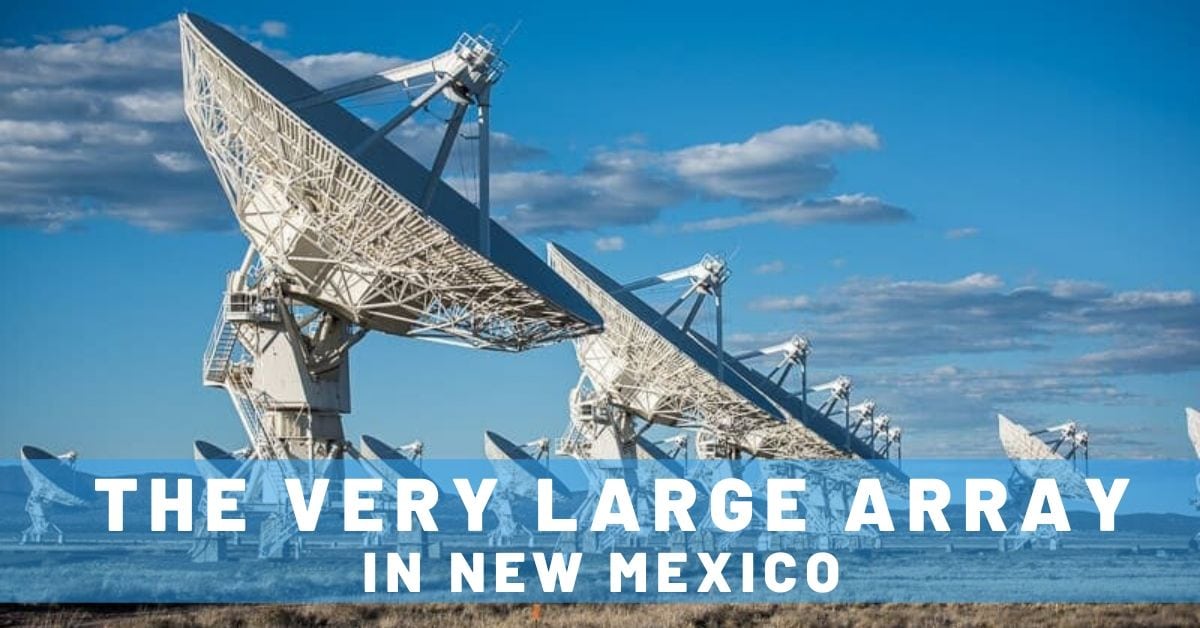

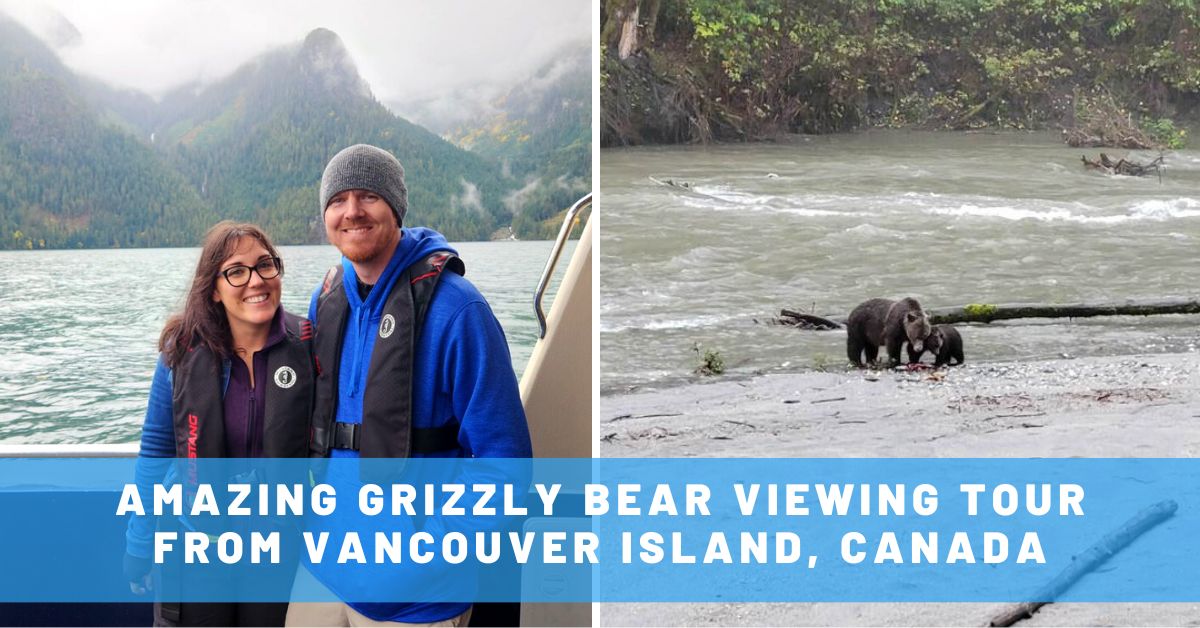
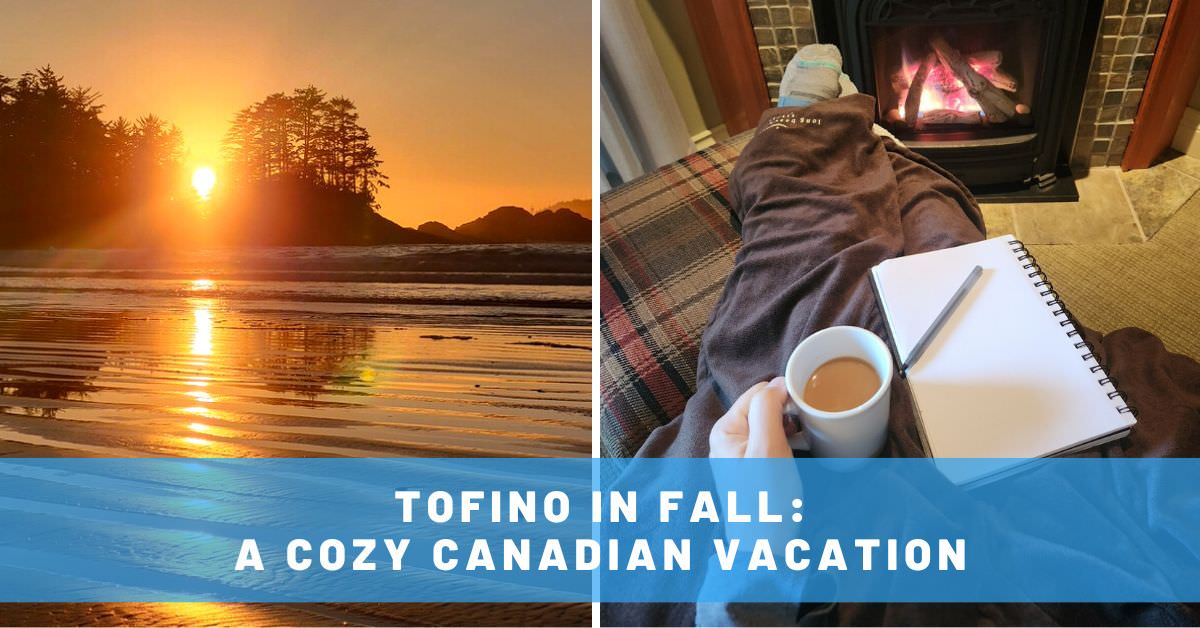

We loved visiting the VLA too, but we think you missed a trick in Roswell. They have a very fine art museum loaded with indigenous pieces and western-themed stuff. But best of all for space geeks like us was the preserved workshop of Robert Goddard, father of rocketry, a nice real-world context for the UFO kitsch (which we also enormously enjoyed. Call us easily entertained!)